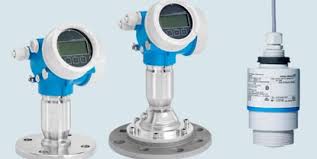Level Instruments
Level instruments are devices used to measure and monitor the level of liquids, solids, or slurries in tanks, vessels, or other containers. They are essential tools in various industries to ensure proper process control, inventory management, and safety.
There are several types of level instruments, each suitable for different applications and materials being measured. Some common types of level instruments include:
1. Level Gauges: Level gauges provide a direct visual indication of the fluid level in a tank. They can be simple sight glasses or more sophisticated transparent tubes with markings to show the liquid level.
2. Float Level Sensors: Float level sensors use a buoyant float that moves up and down with the liquid level. As the float moves, it activates a switch or a potentiometer to provide level data.
3. Capacitance Level Sensors: Capacitance level sensors use changes in capacitance between a probe and the liquid surface to measure the level. The capacitance varies with the level, and this change is converted into a level signal.
4. Ultrasonic Level Sensors: Ultrasonic level sensors use ultrasonic waves to measure the distance between the sensor and the liquid surface. The time taken for the waves to reflect back provides the level measurement.
5. Radar Level Sensors: Radar level sensors use microwave radar technology to determine the distance to the liquid surface. They are suitable for non-contact level measurement.
6. Guided Wave Radar Level Sensors: Guided wave radar sensors use microwave signals guided along a probe to measure the level of liquids and solids.
7. Hydrostatic Pressure Level Sensors: Hydrostatic pressure level sensors measure the pressure at the bottom of the tank, which is proportional to the liquid level.
8. Conductivity Level Sensors: Conductivity level sensors use electrical conductivity to detect the presence or absence of liquid at a certain level.
9. Laser Level Sensors: Laser level sensors use laser beams to measure the distance to the liquid surface and determine the level.
The choice of level instrument depends on factors such as the type of material being measured, the temperature and pressure conditions, the required accuracy, and the specific needs of the application. Level instruments are critical for ensuring proper fluid management, preventing overflow or underflow, and maintaining safety in various industrial processes.

